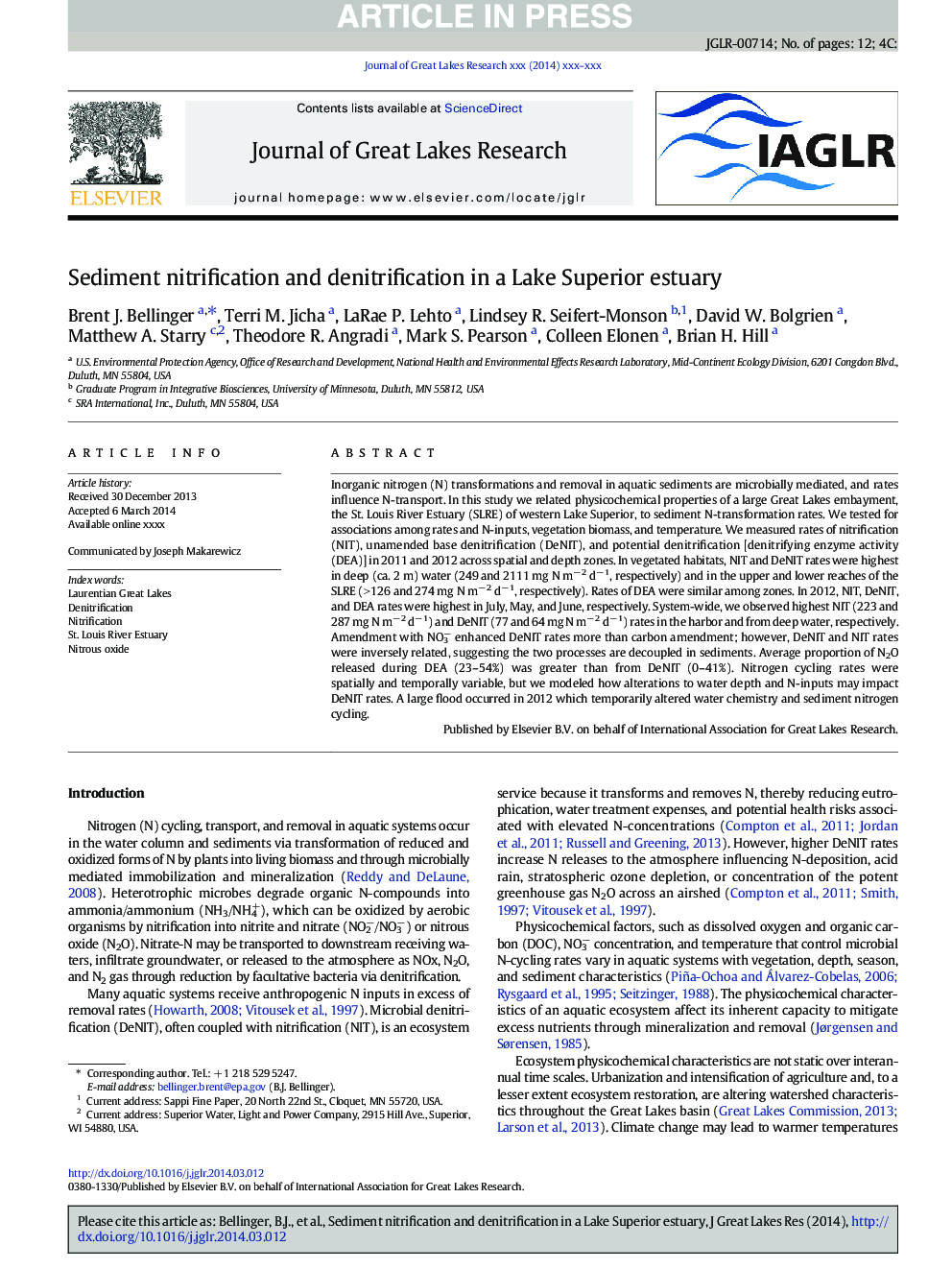| کد مقاله | کد نشریه | سال انتشار | مقاله انگلیسی | نسخه تمام متن |
|---|---|---|---|---|
| 6305231 | 1306683 | 2014 | 12 صفحه PDF | دانلود رایگان |
عنوان انگلیسی مقاله ISI
Sediment nitrification and denitrification in a Lake Superior estuary
ترجمه فارسی عنوان
نیتریفیکاسیون رسوب و دینیتیفیکاسیون در یک رودخانه یخ دریاچه
دانلود مقاله + سفارش ترجمه
دانلود مقاله ISI انگلیسی
رایگان برای ایرانیان
کلمات کلیدی
موضوعات مرتبط
مهندسی و علوم پایه
علوم زمین و سیارات
علوم زمین و سیاره ای (عمومی)
چکیده انگلیسی
Inorganic nitrogen (N) transformations and removal in aquatic sediments are microbially mediated, and rates influence N-transport. In this study we related physicochemical properties of a large Great Lakes embayment, the St. Louis River Estuary (SLRE) of western Lake Superior, to sediment N-transformation rates. We tested for associations among rates and N-inputs, vegetation biomass, and temperature. We measured rates of nitrification (NIT), unamended base denitrification (DeNIT), and potential denitrification [denitrifying enzyme activity (DEA)] in 2011 and 2012 across spatial and depth zones. In vegetated habitats, NIT and DeNIT rates were highest in deep (ca. 2 m) water (249 and 2111 mg N mâ 2 dâ 1, respectively) and in the upper and lower reaches of the SLRE (> 126 and 274 mg N mâ 2 dâ 1, respectively). Rates of DEA were similar among zones. In 2012, NIT, DeNIT, and DEA rates were highest in July, May, and June, respectively. System-wide, we observed highest NIT (223 and 287 mg N mâ 2 dâ 1) and DeNIT (77 and 64 mg N mâ 2 dâ 1) rates in the harbor and from deep water, respectively. Amendment with NO3â enhanced DeNIT rates more than carbon amendment; however, DeNIT and NIT rates were inversely related, suggesting the two processes are decoupled in sediments. Average proportion of N2O released during DEA (23-54%) was greater than from DeNIT (0-41%). Nitrogen cycling rates were spatially and temporally variable, but we modeled how alterations to water depth and N-inputs may impact DeNIT rates. A large flood occurred in 2012 which temporarily altered water chemistry and sediment nitrogen cycling.
ناشر
Database: Elsevier - ScienceDirect (ساینس دایرکت)
Journal: Journal of Great Lakes Research - Volume 40, Issue 2, June 2014, Pages 392-403
Journal: Journal of Great Lakes Research - Volume 40, Issue 2, June 2014, Pages 392-403
نویسندگان
Brent J. Bellinger, Terri M. Jicha, LaRae P. Lehto, Lindsey R. Seifert-Monson, David W. Bolgrien, Matthew A. Starry, Theodore R. Angradi, Mark S. Pearson, Colleen Elonen, Brian H. Hill,
